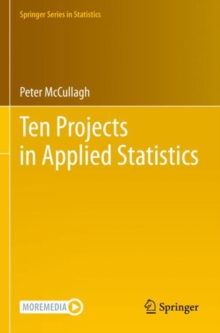
Introduction to Variance Estimation PDF
by Kirk Wolter
Part of the Springer Series in Statistics series
Description
We live in the information age. Statistical surveys are used every day to determine or evaluate public policy and to make important business decisions. Correct methods for computing the precision of the survey data and for making inferences to the target population are absolutely essential to sound decision making. Now in its second edition, Introduction to Variance Estimation has for more than twenty years provided the definitive account of the theory and methods for correct precision calculations and inference, including examples of modern, complex surveys in which the methods have been used successfully.
The book provides instruction on the methods that are vital to data-driven decision making in business, government, and academe. It will appeal to survey statisticians and other scientists engaged in the planning and conduct of survey research, and to those analyzing survey data and charged with extracting compelling information from such data. It will appeal to graduate students and university faculty who are focused on the development of new theory and methods and on the evaluation of alternative methods. Software developers concerned with creating the computer tools necessary to enable sound decision-making will find it essential.
Prerequisites include knowledge of the theory and methods of mathematical statistics and graduate coursework in survey statistics. Practical experience with real surveys is a plus and may be traded off against a portion of the requirement for graduate coursework.
This second edition reflects shifts in the theory and practice of sample surveys that have occurred since the content of the first edition solidified in the early 1980’s. Additional replication type methods appeared during this period and have featured prominently in journal publications. Reflecting these developments, the second edition now includes a new major chapter on the bootstrap method of variance estimation. This edition also includes extensive new material on Taylor series methods, especially as they apply to newer methods of analysis such as logistic regression or the generalized regression estimator. An introductory section on survey weighting has been added. Sections on Hadamard matrices and computer software have been substantially scaled back. Fresh material on these topics is now readily available on the Internet or from commercial sources.
Kirk Wolter is a Senior Fellow at NORC, Director of the Center for Excellency in Survey Research, and Professor in the Department of Statistics, University of Chicago. He is a Fellow of the American Statistical Association and a Member of the International Statistical Institute. He is a past president of the International Association of Survey Statisticians and a past chair of the Survey Research Methods Section of the American Statistical Association. During the last 35 years, he has participated in the planning, execution, and analysis of large-scale complex surveys andhas provided instruction in survey statistics both in America and around the world.
Information
-
Download - Immediately Available
- Format:PDF
- Publisher:Springer New York
- Publication Date:13/08/2007
- Category:
- ISBN:9780387350998
Other Formats
- Paperback / softback from £81.69
- Hardback from £104.05
Information
-
Download - Immediately Available
- Format:PDF
- Publisher:Springer New York
- Publication Date:13/08/2007
- Category:
- ISBN:9780387350998










